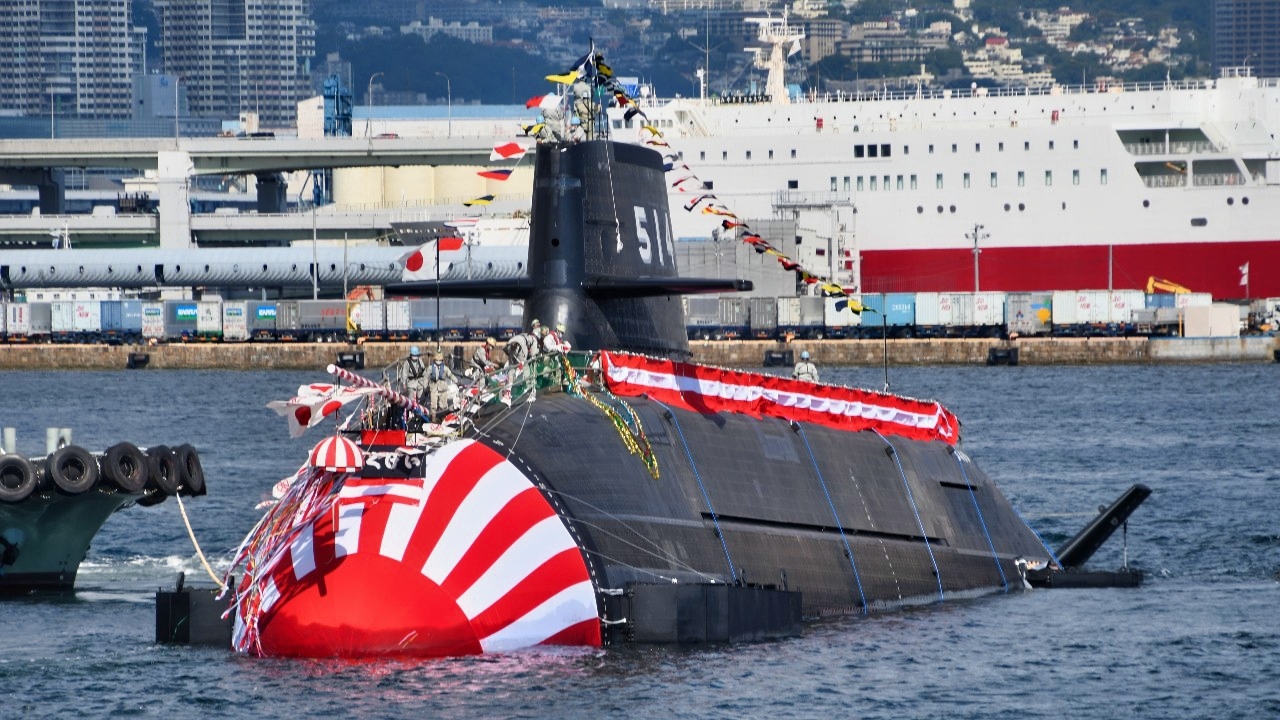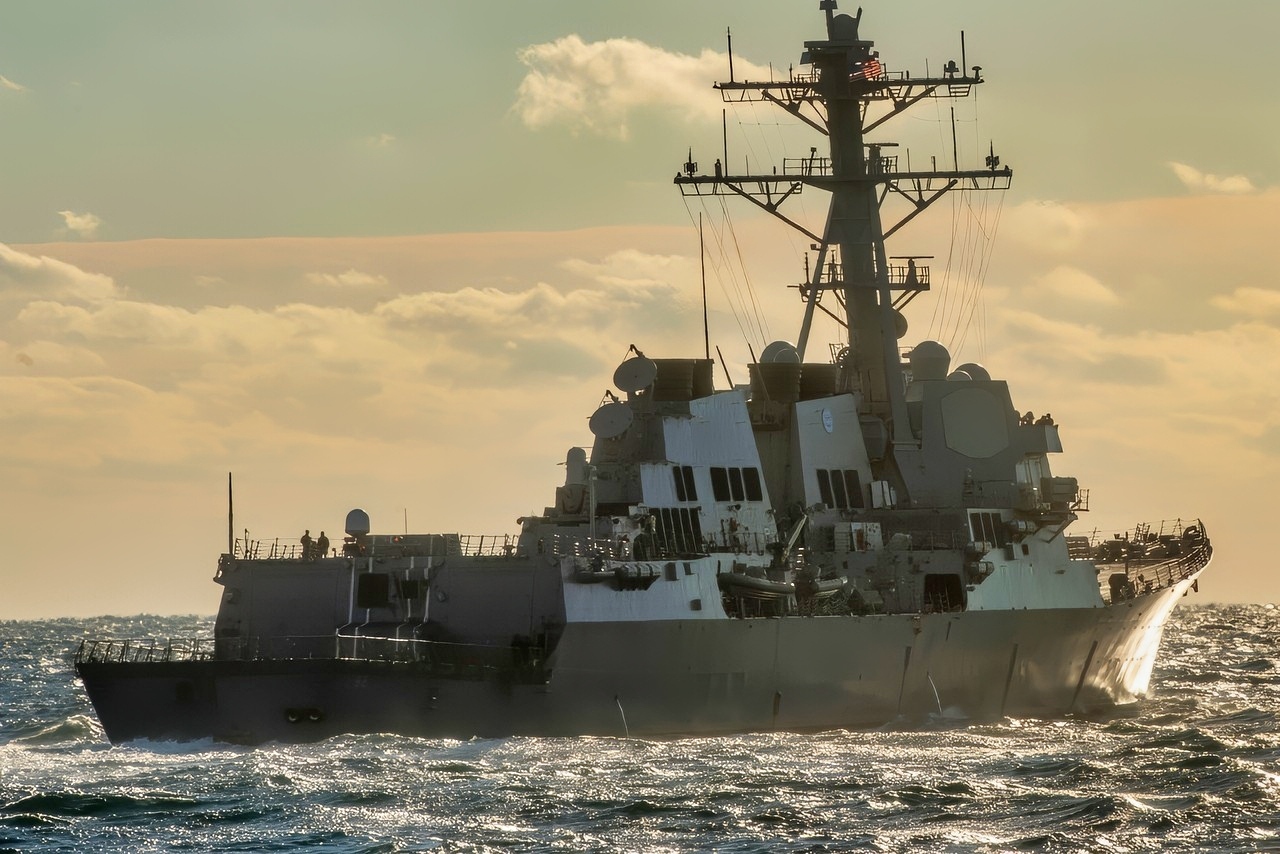Key Points and Summary – “Winning” a U.S.–China clash in the South China Sea isn’t about sinking fleets but achieving political aims.
-Week one is a missile/ISR duel: the side that blinds and breaks the other’s kill chain first gains initiative.

(Oct. 30, 2007) – USS Ronald Reagan (CVN 76) conducts rudder checks as part of the ship’s Board of Inspection and Survey (INSURV) following a six-month Planned Incremental Availability. All naval vessels are periodically inspected by INSURV to check their material condition and battle readiness. U.S. Navy photo by Mass Communication Specialist 2nd Class M. Jeremie Yoder (RELEASED)
-Geography gives China early advantages—interior lines, dense ISR, hardened outposts—but a U.S.-led “archipelago kill web” of dispersed sensors and land-based missiles along the First Island Chain complicates any quick fait accompli.
-Both sides take losses; the sustainability of find-fix-finish cycles and magazine depth decides momentum.
-With clarified treaty commitments to Manila and an expanding coalition posture, China might win early episodes, but coalition denial likely prevails over time.
If America and China Trade Blows in the South China Sea, Who “Wins”?
The South China Sea is reaching a boil. At issue in the South China Sea is not only a disagreement over rocks and shoals but, increasingly, a clash of interests and narratives.
For Beijing, control of the South China Sea is a cornerstone of strategic depth—and a symbol of sovereignty and “national rejuvenation.” For Washington, the South China Sea has become a theater within which Beijing is challenging freedom of navigation, undermining alliance credibility, and trying to impose a coercive sphere of influence from which the US Navy will be permanently expelled beyond the First Island Chain. For Southeast Asian claimants, especially the Philippines but also Vietnam, Malaysia, Brunei, and Taiwan, exclusive economic zones, food and energy security, and the ability to police one’s own waters are at stake.
Hence, the rising temperature: China has moved to formalize its control claims at Scarborough Shoal by designating a national nature reserve, redoubling warnings to Manila, and further increasing the presence of coast guard, maritime militia, and navy vessels in contested waters. In response, the Philippines, Japan, and the United States are now conducting regular combined patrols and are bringing land-based anti-ship missiles into the theater. India joined the Philippines for its first-ever joint sail inside Manila’s EEZ in August. The water is getting more crowded—and more flammable.
Differing Definition of Winning
Against this backdrop, supposing America and China do trade blows in the South China Sea, who would “win”? As always, definitions matter. Here, “winning” will not mean a Mahanian fleet action and surrender ceremony; neither side calculates victory in those terms. Rather, Beijing’s definition is geopolitical: shaping a desirable fait accompli at an acceptable cost, compelling Manila (and others) to back down and deterring US intervention, then freezing those new “facts” on the water.
For the US and its allies, on the other hand, victory is defined in terms of denial: preventing China from realizing its desired fait accompli, keeping allied forces in the fight, and preserving access and international law without uncontrolled escalation. For both sides, any outcome short of those desired geopolitical goals would be, at best, a tactical victory repackaged as a strategic triumph. At worst, it would be a humiliating defeat.
What do credible wargames and expert judgment suggest about the outcome of a shooting war in the South China Sea? They converge on a brutal constant: the opening week is a missile-and-ISR (intelligence, surveillance, reconnaissance) duel in which the side that blinds and breaks the other’s kill chain first buys time and space.
Large surface combatants become missile magnets once detected; survivability depends on deception, dispersion, mobility, and depth in munitions and targeting. In repeated analytic exercises, both sides take serious losses. However, the coalition that keeps enough sensors, shooters, and bases alive by day three—while still finding the adversary—tends to seize the initiative and conduct the fight on its terms.

USS Dwight D. Eisenhower U.S. Navy. Image Credit: Creative Commons.
Given this, geography strongly favors China for the opening phase of war. Land-based anti-ship missiles, fighters, and radars are already close to the most likely flashpoints, connected by hardened outposts. These systems provide Beijing interior lines, shorter flight times, denser ISR coverage, and shorter rearm/refuel cycles. Hardened shelters, dispersed airfields, prepositioned magazines, and layered coast-guard/maritime-militia screens will make allied targeting and early suppression far more difficult, costly, time-consuming, and uncertain. Forward sea- and space-based sensors further magnify this home-field advantage.
Yet the same geography has also enabled the United States and its partners to construct an “archipelago kill web”: a latticework of dispersed sensors and land-based missile batteries strung along the First Island Chain—from Japan’s southwest islands through the Philippines—tying together many smaller kill chains into a more resilient, mutually supporting web. The goal is simple: Keep large People’s Liberation Army Navy (PLAN) surface groups operating in or approaching the South China Sea continuously targetable and attritable, even if some nodes are blinded or destroyed.
Supply and Destroy
Material constraints will bite both sides. The PLAN has mass and proximity advantages, with a battle-force fleet approaching 395 ships this year and more coming. The US Navy’s totals are smaller, and forward bases are more target-rich. But quality and coalition depth are allies in a fight for relative advantage: allied magazines of long-range precision weapons are expanding, coastal batteries are proliferating, and dispersal practice is improving.
On China’s side, prestige platforms still face integration realities—Fujian’s air wing, data links, and sortie generation are not yet war-proven—and mass does not solve the mathematics of salvo leakage against a distributed, land-based web.
The campaign will be decided less by carrier pageantry than by who sustains find-fix-finish cycles after the first magazines empty.
Gray Zone Turns Red
Expect the ladder to be climbed from the gray zone to the red zone.
First, a ramming, a blinding laser, or a disabling shot near Second Thomas or Scarborough: someone escalates; someone fires a “warning” missile; finally, salvos are exchanged. China’s opening theory of action is straightforward: overwhelm local defenders, crater runways and fuel at nearby allied sites, and keep US surface forces outside the envelope while imposing costs that fracture allied will.
The allied theory of victory is the inverse: keep shooters alive, blind the adversary, and attrit anything big that moves—while dispersing aircraft, hardening fuel and power, and flowing mobile coastal batteries along chokepoints. If, by hour 72, allied bases are still generating sorties and mobile launchers are still moving and killing, the probability of Chinese fait accompli collapses—even if both sides absorb painful losses. If those conditions fail, Beijing can snatch a local, temporary tactical success—at a price that invites a wider, more protracted war it does not want.

Taigei-Class Submarine Japan Navy. Image Credit: Creative Commons.
Political-military seams that Beijing once exploited are narrowing. Washington has repeatedly clarified that armed attacks on Philippine forces, public vessels, or aircraft—anywhere in the South China Sea—fall under the mutual defense treaty.
Manila has opened additional sites to US forces. The Japan–Philippines Reciprocal Access Agreement has entered into force, enabling faster, deeper cooperation. Combined patrols are now routine inside the Philippine EEZ. None of this is a magic shield, but all of it complicates Chinese planning and makes a “short, sharp” victory less plausible than it was even two years ago.
Who Wins in the South China Sea in 2025?
So, if war broke out today, who “wins”?
A cautious judgment: China could win early episodes—sinking ships, mauling an airbase, or imposing a brief local exclusion near a contested feature—because interior lines and magazine depth pay dividends on day one. But carried beyond the first salvos, the balance bends toward an ugly allied denial.
With coastal fires in Japan and the Philippines, coalition patrols normalized inside Manila’s EEZ, and Fujian not yet truly operational, Beijing’s odds of converting tactical gains into a durable political victory are low—unless allied kill chains break or magazines run dry.
In that sense, the U.S.-led coalition “wins” by preventing Beijing from achieving its political aims at an acceptable cost; Beijing “loses” if it cannot compel Manila (and others) to yield or keep the US outside the fight.
Neither side wins cleanly, but denial beats fait accompli.
About the Author: Dr. Andrew Latham
Andrew Latham is a Senior Washington Fellow with the Institute for Peace and Diplomacy, a non-resident fellow at Defense Priorities, and a professor of international relations and political theory at Macalester College in Saint Paul, MN. You can follow him on X: @aakatham. He writes a daily column for National Security Journal.
More Military
F/A-XX: The Fighter Jet the U.S. Navy Might Be Desperate for
SEPv4: The M1 Abrams ‘Super’ Tank The Army Didn’t Need
SR-72 Son of Blackbird: The Mach 6 Mystery











Jim
September 16, 2025 at 3:14 pm
From the Key Points and Summary:
“China might win early episodes, but coalition denial likely prevails over time.”
China has the jump because it has the initiative and can act at a time of their choosing. But also has superiority of numbers with production capability reserves which suggest China also prevails over time.
The logistics will never favor the United States because you can’t change geography. China’s shoreline will always be 7,000 miles away from the West Coast and 5,000 miles from Hawaii.
The idea of the First Island Chain Defense is a mirage.
The gap between Japan and the Philippines is long, approximately 2,000 miles (maybe Guam’s U. S. Military installations help… others see Guam as part of a Second Island Chain Defense).
Taiwan is not part of a First Island Chain Defense. To make it so would require militarizing it in a way which would immediately provoke an attack from China against Taiwan. Not stated by China, but likely part of their thinking: never allow Taiwan to be part of a militarized First Island Chain Defense for the U. S.
(The idea of a Line of Containment set up against China is anathema to the Chinese.)
War over the South China Sea? My suspicion, China has little interest in initiating a war, the status quo, while illegal as the result of a soft conquest, favors China and while the U. S. protests Chinese claims of sovereignty and patrols vigorously to defend the International Law right of Freedom of Navigation in international waters, won’t initiate a war unless China engages in absolute denial of navigation, which China is unlikely to do.
At present, China depends on Freedom of Navigation, too, for its own economic access on the Chinese Seaboard to international markets and raw material imports.
The only game in town is Taiwan. The South China Sea (and East China Sea) are bargaining chips over Taiwan.
Cut the best deal we can over Taiwan and China vacates its claims of sovereignty in both South & East China Seas.
Dave Nelson
September 16, 2025 at 5:54 pm
China can always win this fight if it starts with a powerful EMP that destroys electrical and electronic nets in Taiwan (and if big enough, the Philippines and Guam too). Basically everyone starves within 12 months.
So the right strategy to follow WRT the above are very, very clear red lines (e.g., no nukes anywhere) and the consequences of crossing them.
For ordinary knetic war Taiwan should be licensing drone technology from Ukraine. The UA has made the Black Sea inhospitable for Russian Naval vessels; there is no reason Taiwan cannot do much of the same in the S. China Sea. Damage/sink a large percentage of the invasion fleet, apply tens of thousands FPV drones for those who reach land.
Jim
September 16, 2025 at 7:03 pm
Does Taiwan want to follow the Ukraine example?